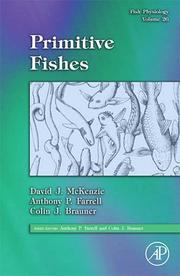| Listing 1 - 3 of 3 |
Sort by
|

ISBN: 2800115572 9782800115573 Year: 1987 Volume: 4 Publisher: Marcinelle Dupuis
Abstract | Keywords | Export | Availability | Bookmark
 Loading...
Loading...Choose an application
- Reference Manager
- EndNote
- RefWorks (Direct export to RefWorks)
En compagnie de scientifiques (on reconnaît les caricatures des anthropologues Yves Coppens et Richard Leakey), Jeannette participe à des fouilles en Tanzanie, à la recherche de squelettes d'australopithèques. Elle y croise également la célèbre Diane Fosset, connue pour son travail sur les gorilles, qui succombera sous les balles de Tob's, un ignoble aventurier sans état d'âme. La course-poursuite les entraîne en Birmanie, et se retrouve au Tibet où Tob’s cherche à abattre le Yeren, une sorte de yéti à poil roux...
Fossiles vivants --- Fossils [Living ] --- Levende fossielen --- Living fossils --- Apes --- Pictorial works

ISBN: 1281028800 9786611028800 0080549527 0123736714 9780080549521 9780123736710 9781281028808 6611028803 Year: 2007 Publisher: Amsterdam Boston Elsevier/Academic Press
Abstract | Keywords | Export | Availability | Bookmark
 Loading...
Loading...Choose an application
- Reference Manager
- EndNote
- RefWorks (Direct export to RefWorks)
Primitive fishes are a relatively untapped resource in the scientific search for insights into the evolution of physiological systems in fishes and higher vertebrates. Volume 26 in the Fish Physiology series presents what is known about the physiology of these fish in comparison with the two fish groups that dominate today, the modern elasmobranchs and the teleosts. Chapters include reviews on what is known about cardiovascular, nervous and ventilatory systems, gas exchange, ion and nitrogenous waste regulation, muscles and locomotion, endocrine systems, and reproduction. Editors prov
Fishes --- Living fossils. --- Physiology. --- Evolution. --- Fossils, Living --- Organisms --- 597.2 --- 597.3 --- 597.4 --- 591.1 --- 597.3 Elasmobranchii (Plagiostomata). Cartilaginous fishes. Selachii. Sharks etc. --- Elasmobranchii (Plagiostomata). Cartilaginous fishes. Selachii. Sharks etc. --- 597.2 Cyclostomata (Marsipobranchii). Lampreys. Hagfishes --- Cyclostomata (Marsipobranchii). Lampreys. Hagfishes --- 591.1 Animal physiology --- Animal physiology --- 597.4 Ganoidei --- Ganoidei
Book
ISBN: 0691210098 Year: 2020 Publisher: Princeton, NJ : Princeton University Press,
Abstract | Keywords | Export | Availability | Bookmark
 Loading...
Loading...Choose an application
- Reference Manager
- EndNote
- RefWorks (Direct export to RefWorks)
To show the importance of stochastic processes in the change of gene frequencies, the authors discuss topics ranging from molecular evolution to two-locus problems in terms of diffusion models. Throughout their discussion, they come to grips with one of the most challenging problems in population genetics--the ways in which genetic variability is maintained in Mendelian populations.R.A. Fisher, J.B.S. Haldane, and Sewall Wright, in pioneering works, confirmed the usefulness of mathematical theory in population genetics. The synthesis their work achieved is recognized today as mathematical genetics, that branch of genetics whose aim is to investigate the laws governing the genetic structure of natural populations and, consequently, to clarify the mechanisms of evolution.For the benefit of population geneticists without advanced mathematical training, Professors Kimura and Ohta use verbal description rather than mathematical symbolism wherever practicable. A mathematical appendix is included.
Population genetics --- Mathematical models. --- F-statistics. --- G-C content. --- K distribution. --- Malthusian parameter. --- Ordovician. --- adaptive surface. --- apparent. --- breeding structure. --- chromosomal variation. --- darwin. --- evolutionary rates. --- fossils, living. --- insulins. --- lethal equivalent. --- linkage disequilibrium. --- mutation, advantageous. --- natural selection. --- quasi-equilibrium surface. --- rate of. --- selection. --- selective values. --- steady flux equation. --- viability polygenes.
| Listing 1 - 3 of 3 |
Sort by
|

 Search
Search Feedback
Feedback About UniCat
About UniCat  Help
Help News
News